Permits and building rules are necessary to install a fence, a permanent pavilion, and a new workshop. Knowing the frost line when building on a foundation is critical to avoid structural damage caused by frost heave. Although the notion of a frost line seems universal, the depth of a frost line varies from place to place.
The frost line is influenced by soil composition, moisture content, and the year’s average temperature. According to the local building rules, know how deep the frost line needs to be in your area before starting a project. In addition, to secure the footings below the frost line, it is essential to prepare ahead of time and ensure that you have enough material. In this post, you will learn everything regarding the Frost Line.
What is a Frost line?
The Frost line or freezing depth represents the deepest point in the ground to which the groundwater in the soil is expected to freeze. For example, the NYC frost line (New York) is 50 inches long.
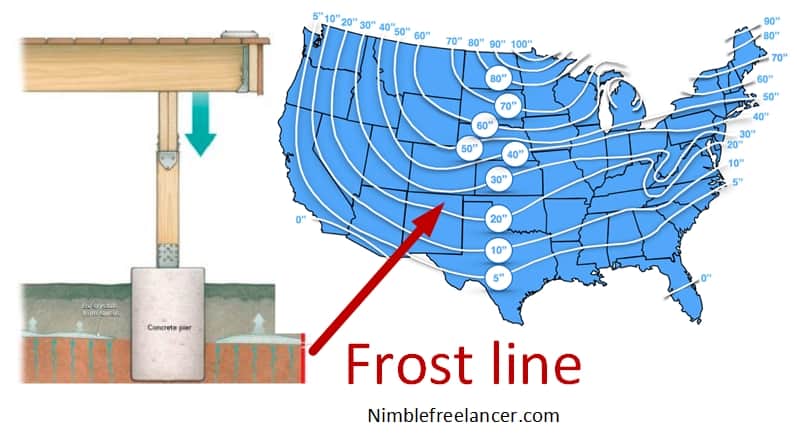
A frost depth map (presented above) is a valuable tool to provide a rough idea of how deep a user has to dig to where the ground freezes. For example, you need to know the frost line for the fence post because you need to know how deep you should dig fence post holes.
It’s helpful to have access to a frost depth map to understand how far down you need to dig to reach areas where the earth doesn’t freeze. Any point along a contour line on a frost-depth map shows the depth of the frost in the towns and cities that the line passes, which is standard practice.
The foundation of any structure is crucial to its longevity. To ensure that it remains in place, you need a deep and robust footing that will resist the weight from above as much as possible without sacrificing stability or mobility when needed, most during times like heavy rainstorms or harsh winters where conditions may be too wet for roadways but not necessarily at your home- this means focusing on drainage issues before anything else! If frost heaving occurs due to an expanding frozen ground beneath our feet OR rising moisture filling soil galleries underneath nearby trees, then all bets could potentially be.
Sometimes, before any work, you need to know the average first and the last frost in the year for each State. This information can be valuable, like on this map below:
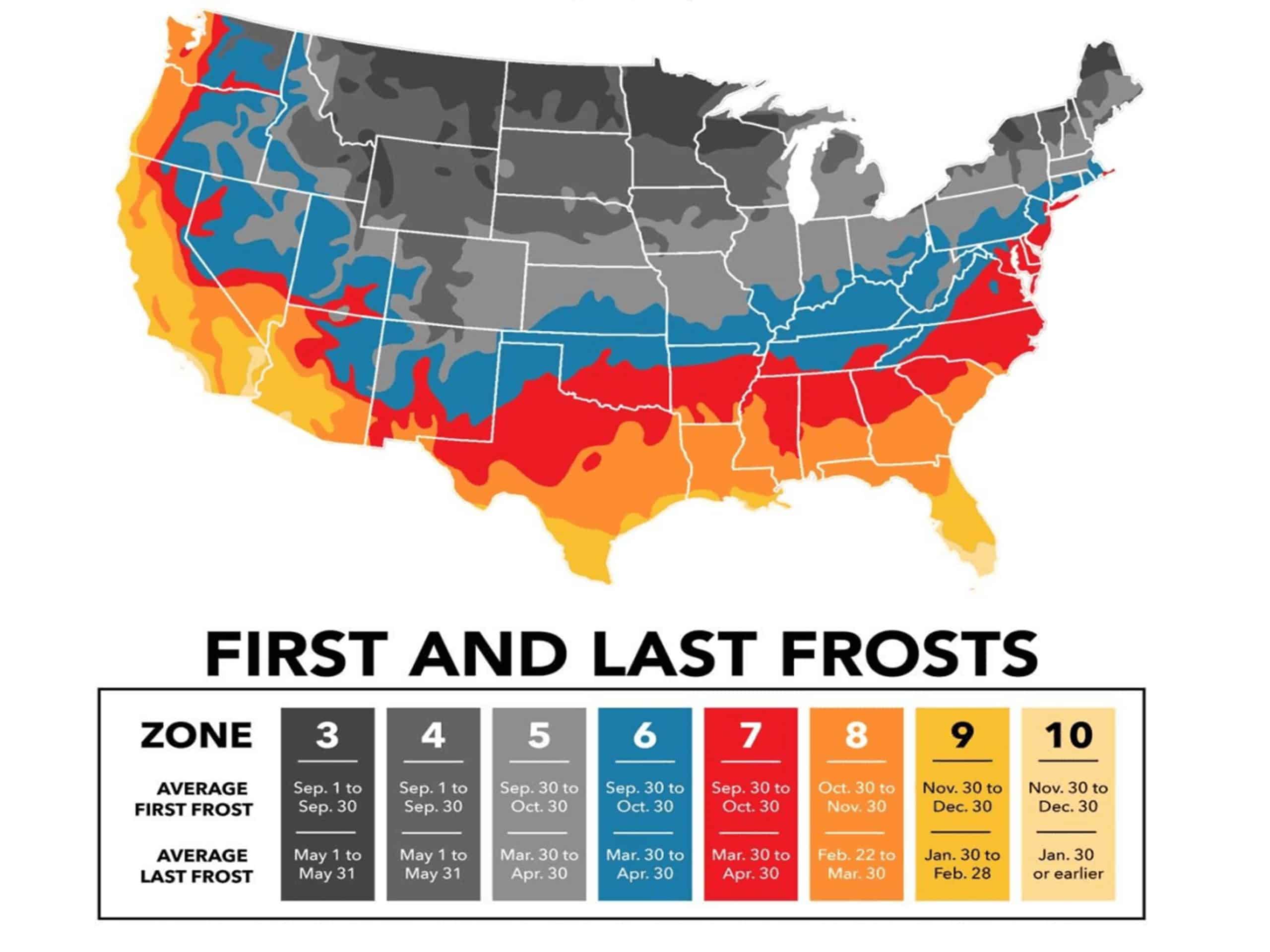
Frost line First and last frosts Infographic
The maximum frost line depth is due to frost heaving, shifting a structure’s foundations. Specific local building regulations take frost depth into account while drafting construction rules. A common practice is to build a foundation lower than the depth of the frost. Water and sewage pipelines are often buried beneath the frost to keep them from freezing. Alternatively, you can use heat tape or similar materials to insulate or actively heat pipes to enable them to be buried at shallower depths. As a result of the added expense, this technique is often reserved for situations where digging deeper trenches isn’t practical due to utility conflicts, shallow bedrock, and other factors.
The Frost line is a geographical term referred to as frost depth. This word refers to the level or depth of groundwater at which the water starts to freeze. This level depends on the surrounding climatic situations and the heat transfer properties in the area’s material, including soil or sources. Please read our article about the coldest State in the US .
.
Climate, soil heat transmission qualities, and proximity to heat sources all affect the depth of a frost. For example, snow and asphalt help keep the earth warm by insulating it. The depth of the line changes according to latitude.
The most excellent frost depth measured ranged from zero to eight feet for the contiguous United States. Also known as “thaw depth,” this concept refers to how deep ice may freeze before becoming permanent permafrost. A Frost line may also be defined as a vertical geographic height under which frost doesn’t occur. Finally, “frost front” refers to the shifting location of the freezing and thawing line throughout the year.
Remember, based on your project and the digging work, you need to know how far to dig below the Frost Line because the numbers for water pipes and the foundation works are different.
How to measure Frost Line depth?
Engineers use Frost Tubes to measure frost line depth in the field. Our article How to Check Frost Depth showed how Frost Tube works. The central idea is to measure frost line depth based on the line at which the water freezes in colored water in a frost tube instrument (see image below).
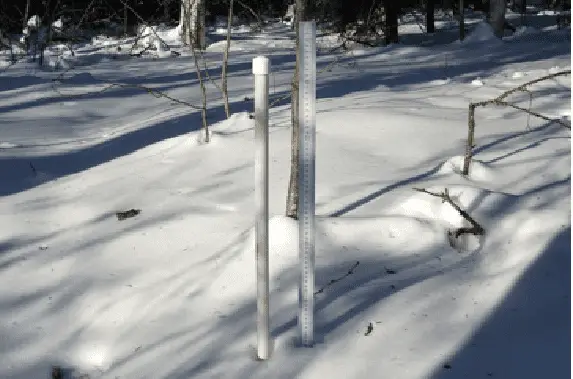
Frost Tube measures frost line depth in winter.
If below-freezing weather begins, the soil in contact with the air starts to freeze. If temperatures are well below 32 F, solid frozen layers can quickly form on top of one another. They do not expand when water is added or removed from them due to increased pressure because they have transformed into ice lenses within your yard! Using a frost tube is essential to measure frost line depth as precisely as possible.
How deep does the ground freeze in the US?
The US maximum frost depth ranges from 0 to 100 inches (2.4 m), based on Federal Highway Administration Publication Number FHWA-HRT-08-057. For example, the frost depth in Hawaii is 0 inches, while in Minnesota, it is 80 inches, and in Alaska, it is 100 inches.
The latitude is a significant factor that affects the frost lines and is closer to the north or south poles. The Federal Highway Administration points out that frost depth ranges between 0 and 8 feet in most of the United States.
To become an expert in building code and learn more, visit the free building code course.
How Deep is the Frost Line in My Area?
Frost depth by zip code map (see map) shows that the maximum frost depth is in Alaska (100 inches), Minnesota (80 inches), and North Dakota (75 inches). However, because of the warm climate, Florida and Hawaii have frost depths equal to zero.
So, how deep should you dig fence post holes? The frost line for fence posts varies from region to region. In cold winter states such as Alaska, you need to dig 100 inches of post holes, while in Florida, frost line depth equals zero, and there is no frost line set. However, we can see the cold weather surprise in northern Florida and even frozen pipes.
How deep is the frost line in Ohio?
The Frost line in Ohio is 32 inches deep. The cold season lasts three months, from December 2 to March 2. The average daily high temperature in Ohio is below 46°F.
How deep is the frost line in P.A.?
The frost line in Pennsylvania (P.A.) is deep at 44 inches because of cold winters. Winter highs are 33°F (0.6°C) to 45°F (7.2°C), while lows in Pennsylvania register in the 19°F (-7.2°C) to 30°F (-1.1°C) range.
It is expected to assume that the coldest states have the maximum or deepest frost lines. These states include Alaska; this one has an astounding frost line of 100 inches. At the same time, it is general for the hot and humid U.S. states to possess a shallow frost line. After Alaska, Minnesota has a frost line of 80 inches, and North Dakota follows it with 75 inches. The external frost line includes states like Florida and Hawaii that display 0 inches of frost lines. South Carolina and Louisiana possess 4 inches, while California and Georgia have 5 inches of frost lines.
How deep is the frost line in Michigan?
The Frost line in Michigan is deep 42 inches because from December through February, temperatures rarely break the 30°F mark, and up to 160 inches of snow can fall.
Frost lines are considered an essential base for construction and other recreational activities. This is so; if water converts from liquid to solid, the volume will increase by 9%. This leads to frost heaving, meaning the soil can move up if the groundwater freezes and inflicts severe damage to the building in the process. Thus, paying heed to the frost line is crucial while building foundations or laying down sewers and pipes. They need to be made below the frost line to avoid any predicaments in the future.
Frost Line By Zip Code and State
| US State | Symbol | Zip Min | Zip Max | Frost Line inches |
|---|---|---|---|---|
| Alaska | AK | 99501 | 99950 | 100 |
| Alabama | AL | 35004 | 36925 | 6 |
| Arkansas | AR | 71601 | 72959 | 14 |
| Arkansas (Texarkana) | AR | 75502 | 75502 | 14 |
| Arizona | AZ | 85001 | 86556 | 10 |
| California | CA | 90001 | 96162 | 5 |
| Colorado | CO | 80001 | 81658 | 44 |
| Connecticut | CT | 6001 | 6389 | 36 |
| Connecticut | CT | 6401 | 6928 | 36 |
| Dist of Columbia | DC | 20001 | 20039 | 4 |
| Dist of Columbia | DC | 20042 | 20599 | 4 |
| Dist of Columbia | DC | 20799 | 20799 | 4 |
| Delaware | DE | 19701 | 19980 | 32 |
| Florida | FL | 32004 | 34997 | 0 |
| Georgia | GA | 30001 | 31999 | 5 |
| Georga (Atlanta) | GA | 39901 | 39901 | 5 |
| Hawaii | HI | 96701 | 96898 | 0 |
| Iowa | IA | 50001 | 52809 | 58 |
| Iowa (OMAHA) | IA | 68119 | 68120 | 58 |
| Idaho | ID | 83201 | 83876 | 31 |
| Illinois | IL | 60001 | 62999 | 36 |
| Indiana | IN | 46001 | 47997 | 36 |
| Kansas | KS | 66002 | 67954 | 32 |
| Kentucky | KY | 40003 | 42788 | 15 |
| Louisiana | LA | 70001 | 71232 | 4 |
| Louisiana | LA | 71234 | 71497 | 4 |
| Massachusetts | MA | 1001 | 2791 | 32 |
| Massachusetts (Andover) | MA | 5501 | 5544 | 32 |
| Maryland | MD | 20331 | 20331 | 30 |
| Maryland | MD | 20335 | 20797 | 30 |
| Maryland | MD | 20812 | 21930 | 30 |
| Maine | ME | 3901 | 4992 | 74 |
| Michigan | MI | 48001 | 49971 | 42 |
| Minnesota | MN | 55001 | 56763 | 80 |
| Mississippi | MS | 38601 | 39776 | 8 |
| Mississippi(Warren) | MS | 71233 | 71233 | 8 |
| Montana | MT | 59001 | 59937 | 61 |
| North Carolina | NC | 27006 | 28909 | 10 |
| North Dakota | ND | 58001 | 58856 | 75 |
| Nebraska | NE | 68001 | 68118 | 48 |
| Nebraska | NE | 68122 | 69367 | 48 |
| New Hampshire | NH | 3031 | 3897 | 60 |
| New Jersey | NJ | 7001 | 8989 | 36 |
| New Mexico | NM | 87001 | 88441 | 18 |
| Nevada | NV | 88901 | 89883 | 23 |
| New York (Fishers Is) | NY | 6390 | 6390 | 50 |
| New York | NY | 10001 | 14975 | 50 |
| Ohio | OH | 43001 | 45999 | 32 |
| Oklahoma | OK | 73001 | 73199 | 20 |
| Oklahoma | OK | 73401 | 74966 | 20 |
| Oregon | OR | 97001 | 97920 | 18 |
| Pennsylvania | PA | 15001 | 19640 | 44 |
| Rhode Island | RI | 2801 | 2940 | 38 |
| South Carolina | SC | 29001 | 29948 | 4 |
| South Dakota | SD | 57001 | 57799 | 64 |
| Tennessee | TN | 37010 | 38589 | 12 |
| Texas (Austin) | TX | 73301 | 73301 | 10 |
| Texas | TX | 75001 | 75501 | 10 |
| Texas | TX | 75503 | 79999 | 10 |
| Texas (El Paso) | TX | 88510 | 88589 | 10 |
| Utah | UT | 84001 | 84784 | 30 |
| Virginia | VA | 20040 | 20041 | 18 |
| Virginia | VA | 20040 | 20167 | 18 |
| Virginia | VA | 20042 | 20042 | 18 |
| Virginia | VA | 22001 | 24658 | 18 |
| Vermont | VT | 5001 | 5495 | 60 |
| Vermont | VT | 5601 | 5907 | 60 |
| Washington | WA | 98001 | 99403 | 24 |
| Wisconsin | WI | 53001 | 54990 | 65 |
| West Virginia | WV | 24701 | 26886 | 32 |
| Wyoming | WY | 82001 | 83128 | 56 |
Frost depth by zip table
Frost depth by zip code in the US States
- The Frost line in Alaska is 100 inches.
- Frost’s line in Alabama is 6 inches.
- The Frost line in Arkansas is 14 inches.
- The Frost line in Arizona is 10 inches.
- The Frost line in California is 5 inches.
- The Frost line in Colorado is 44 inches.
- The Frost line in Connecticut is 36 inches.
- The Frost line in Dist of Columbia is 4 inches.
- The Frost line in Delaware is 32 inches.
- The Frost line in Florida is 0 inches.
- The Frost line in Georgia is 5 inches.
- The Frost line in Hawaii is 0 inches.
- The Frost line in Iowa is 58 inches.
- Frost’s line in Idaho is 31 inches.
- The Frost line in Illinois is 36 inches.
- The Frost line in Indiana is 36 inches.
- The Frost line in Kansas is 32 inches.
- The Frost line in Kentucky is 15 inches.
- The Frost line in Louisiana is 4 inches.
- The Frost line in Massachusetts is 32 inches.
- The Frost line in Maryland is 30 inches.
- The Frost line in Maine is 74 inches.
- The Frost line in Michigan is 42 inches.
- Frost’s line in Minnesota is 80 inches.
- The Frost line in Mississippi is 8 inches.
- The Frost line in Montana is 61 inches.
- The Frost line in North Carolina is 10 inches.
- The Frost line in North Dakota is 75 inches.
- The Frost line in Nebraska is 48 inches.
- The Frost line in New Hampshire is 60 inches.
- The Frost line in New Jersey is 36 inches.
- The Frost line in New Mexico is 18 inches.
- The Frost line in Nevada is 23 inches.
- Frost’s line in New York (Fishers Is) is 50 inches.
- The Frost line in Ohio is 32 inches.
- The Frost line in Oklahoma is 20 inches.
- The Frost line in Oregon is 18 inches.
- The Frost line in Pennsylvania is 44 inches.
- The Frost line in Rhode Island is 38 inches.
- The Frost line in South Carolina is 4 inches.
- The Frost line in South Dakota is 64 inches.
- The Frost line in Tennessee is 12 inches.
- The Frost line in Texas (Austin) is 10 inches.
- The Frost line in Utah is 30 inches.
- The Frost line in Virginia is 18 inches.
- The Frost line in Vermont is 60 inches.
- The Frost line in Washington is 24 inches.
- The Frost line in Wisconsin is 65 inches.
- The Frost line in West Virginia is 32 inches.
- The Frost line in Wyoming is 56 inches.
A few laws allow foundations to be higher above the frost line if “protected against frost.” However, local code inspectors may demand further engineering to get the go-ahead. Using rigid foam insulation as a frost barrier, the 1995 One and Two-Family Dwelling Code from the Council of American Building Officials (CABO) simplifies the construction of slab-on-grade dwellings. If you live where the ground freezes often and frost heave is a risk, a frost-protected shallow foundation (FPSF) may be the best option.
Digging on frozen ground
The optimum time to start excavating is in the spring if you live in a cold area and don’t have a pressing need for construction. Digging to the required depth once the ground has warmed up will be easier. Keep a stick marked with the correct depth near your worksite so you can take frequent measurements of the progress. Ground-level footings are required in most cold-climate construction regulations, and these can be as deep as four feet in the northern United States. The purpose is to prevent foundations from heaving due to the effects of frost.
Remember, you can use gravel as construction soil in locations with frozen ground. Gravel is considered free from frost (insensitive to frost).
If you want to dig on frozen ground, you need the proper tool. Since “the proper tool for the right job” is a well-known adage in the construction industry, it stands to reason. You can’t handle frozen soil the same way as warm dirt. Using a standard bucket on a loader damages the equipment and the operator. In most cases, when a loader strikes the solid ground, the blunt tines produce an unpleasant, jarring sound. After the day, the operator may feel like they’ve just performed a hard rodeo for eight hours.
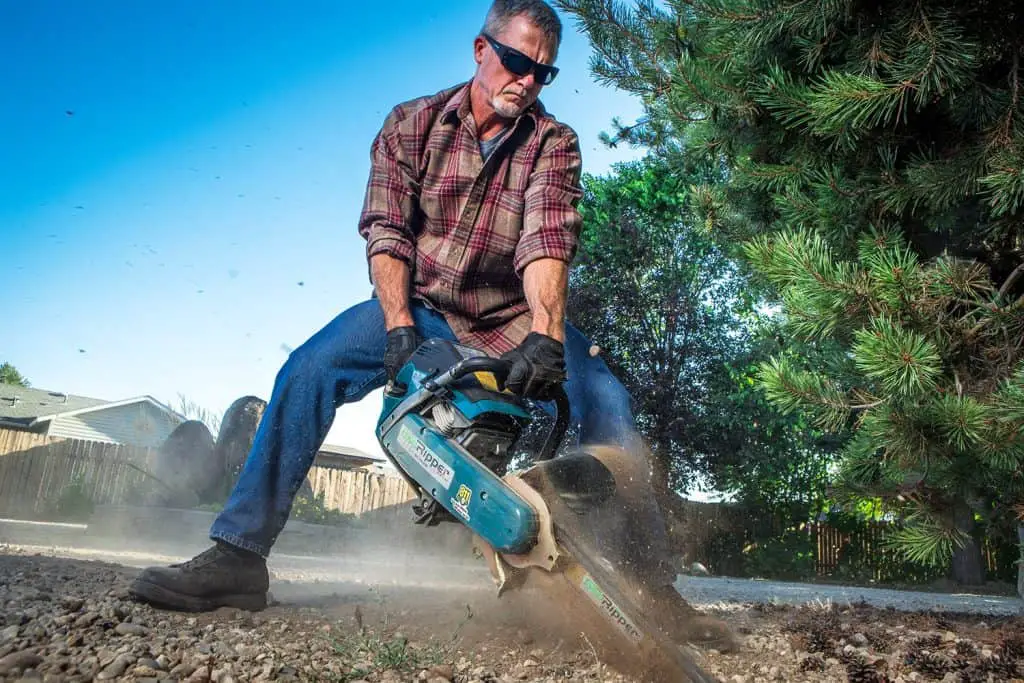
Georipper handheld mini trencher
There are various tools to choose from for digging in the frozen ground. A frost bucket is like a spade or a trowel when shoveling. Permafrost can be pierced more quickly because of its thin tip and sharp tines, making everyone’s lives simpler. A static ripper may be an effective tool when working with frozen ground. However, this can also be hard on that equipment since the high impact might eventually shake the equipment to bits. The machinery’s raw power is all needed to have an effect.
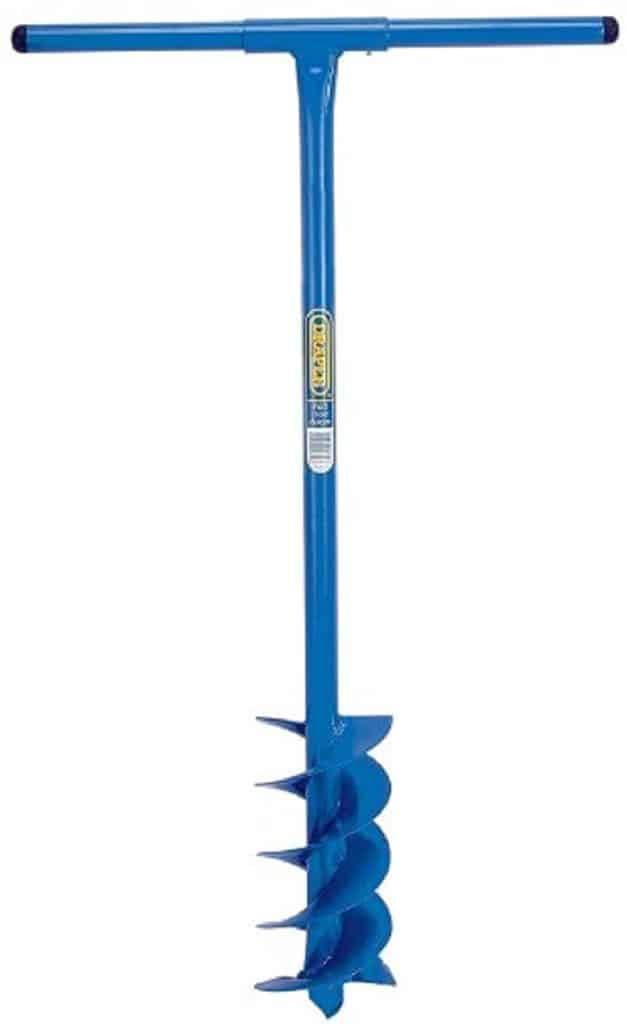
A complete battalion of tools is at your disposal for breaking into the frozen ground. You may use several hydraulic tools to defrost tiny bits of frozen ground. However, drilling through the frozen ground on a broad or narrow scale will necessitate a more comprehensive solution. Simply warming up the soil where you intend to dig is one of the most straightforward methods for dealing with frozen ground. You may do this in a variety of ways. On the other hand, you can set up a small charcoal fire on top of the soil where you intend to dig. However, because of the potential for fire, you must constantly watch the flames to ensure that none of your construction equipment or supplies is ignited.
Create a substantial outdoor tent or another temporary cover to raise the temperature in the area you will be digging. As an extra benefit, this can protect your employees from inclement weather. For the same effect, you may use a portable heater. Hydrating is the last procedure for thawing frozen soil. This technique involves sprinkling the frozen ground liberally with warm water. If you’re concerned about the ecological impact, you may wish to consult an environmental expert to ensure that the water supply is not contaminated.
In my opinion, the best solution for frost ground digging is a mini excavator. This heavy machinery is not large, and it is easy to maneuver.
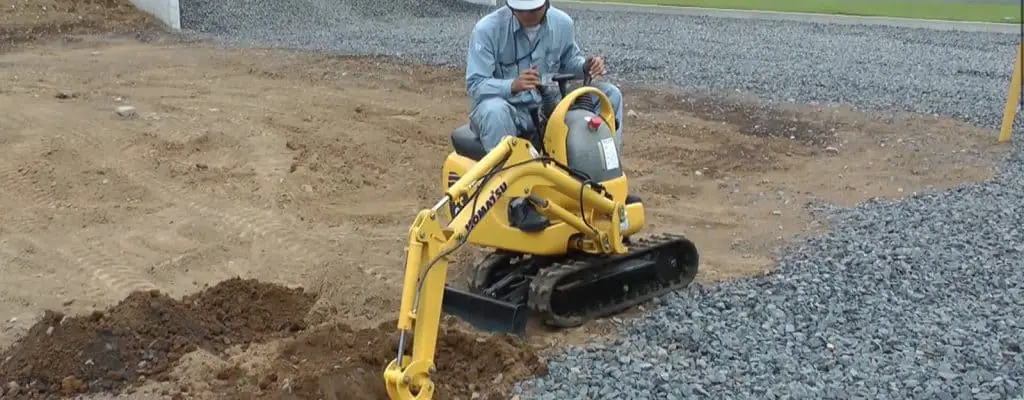
Conclusion
Although the notion of a frost line is universal, the depth of a frost line varies from place to place. The frost line is influenced by soil composition, moisture content, and the year’s average temperature. According to the local building rules, know how deep the frost line needs to be in your area before starting a project. To secure the footings below the frost line, it is essential to prepare ahead of time and ensure that you have enough material. Don’t forget to consult your local construction inspector to determine your area’s exact frost line depth.





